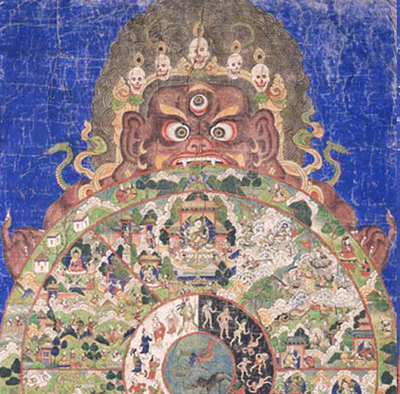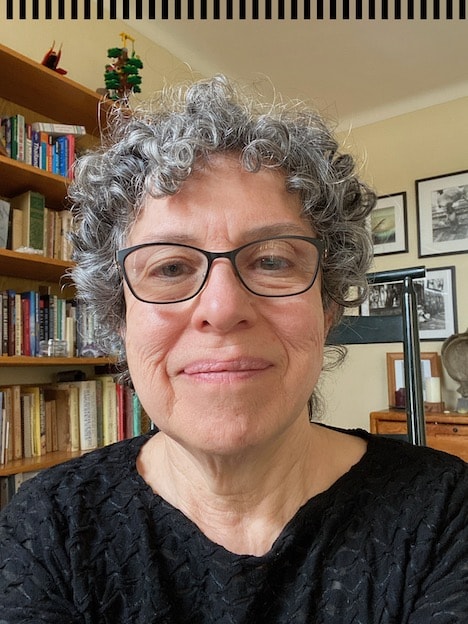
About the Meditation Podcast
Meditation session led by Elaine Retholtz.
The guided meditation begins at 13:09.
For centuries Himalayan practitioners have used meditation to quiet the mind, open the heart, calm the nervous system, and increase focus. Now Western scientists, business leaders, and the secular world have embraced meditation as a vital tool for brain health.
Whether you’re a beginner, a dabbler, or a skilled meditator seeking the company of others, join expert teachers in a forty-five-minute weekly program designed to fit into your lunch break. Each session will be inspired by a different work of art from the Rubin Museum’s collection and will include an opening talk, a twenty-minute meditation session, and a closing discussion.
This program is supported in part by the Hemera Foundation with thanks to our presenting partners Sharon Salzberg, the Interdependence Project, and Parabola Magazine.
Related Artwork

Theme: Life After
The Wheel of Life is a Tibetan Buddhist visualization of the human condition within the endless cycle of birth, death, and rebirth””samsara””and a vivid reminder of the law of karma. Painted on a striking lapis background, the red, wrathful figure of Yama, the Lord of Death, or possibly Yami, female demon of death, holds the circle of samsara containing all six realms of existence, and is about to swallow it””reflecting the precarious impermanence of all that exists in these realms.
The center of the wheel portrays the three mental poisons, or kleshas, that keep beings trapped in samsara: attachment (a rooster), hatred (a green snake), and ignorance (a black pig). The next circle, with white and black halves, reminds us how these qualities, and their opposites, rule our future. The black half shows that negative actions, powered by the three poisons, lead us downward into the lower births. The white half shows that if we practice right motivation and right action, we can move upward through the Wheel of Life and ultimately liberate ourselves. The widest circle depicts the six realms of possible rebirths within samsara: hell beings (at the bottom), hungry ghosts, animals, human beings, demigods, and gods (at the top).
Along the outer edge, the 12 links of dependent origination symbolize how consciousness becomes trapped in samsara under the power of ignorance, which leads to actions with karmic repercussions, the sensual desires of the body and mind, mental grasping at pleasures and existence, and ultimately birth, old age, and death.
About the Speaker

Elaine Retholtz has been studying and practicing the Dharma since 1988. In addition to teaching Dharma at New York Insight, she is a certified Mindfulness Based Stress Reduction teacher and a certified MBSR teacher trainer. She is deeply interested in helping students integrate mindfulness into daily life. Elaine is committed to deepening her own understanding of issues of diversity and the way racial conditioning in the United States affects all of us””both as individuals and in relation to the institutions we are a part of, including New York Insight. She’s been involved in New York Insight’s diversity efforts for many years.
